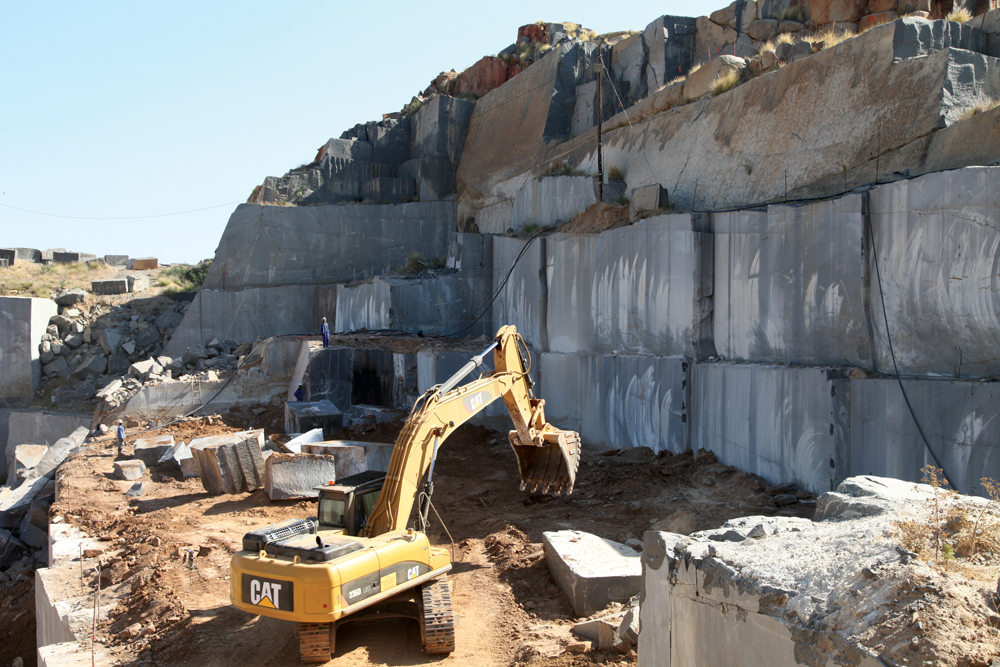Introducing the Mysteries of Granite Quarrying: Where Stamina and Sophistication Meet
The globe of granite quarrying is a world where the raw toughness of nature converges with human creativity to create structures that stand the examination of time with an air of beauty. From the midsts of quarries to the careful polishing in workshops, the process of changing granite into architectural wonders is an intricate dancing of custom and innovation. As we peer right into the depths of this old craft, we begin to discover the covert ins and outs that shape the really essence of our developed atmosphere.
The Origins of Granite Quarrying
In the record of architectural history, the beginnings of granite quarrying are shrouded in a tapestry of ancient workmanship and geological wonders. Going back to ancient Egypt and Mesopotamia, the extraction of granite from quarries noted the start of a journey that would ultimately lead to the development of some of the world's most iconic frameworks.
Granite quarrying's roots can be mapped to the proficient craftsmens that identified the stone's longevity and aesthetic appeal. Via a mix of primitive devices and large determination, these early quarry employees discovered granite blocks that would certainly come to be the foundation of people.
As civilizations developed, so did the methods of quarrying granite. The Romans, renowned for their design prowess, created sophisticated methods for removing granite to build monuments, holy places, and roads that stood the test of time.
The legacy of these ancient quarrying techniques remains to form contemporary design, with granite staying a sign of stamina and sophistication in construction tasks around the world. (granite quarries in south africa)
Tools of the Quarrying Profession
The advancement of granite quarrying techniques from old human beings to modern-day times highlights the important function played by the tools of the quarrying profession in forming the market's techniques. In old times, quarrying tools were rudimentary, often including knives, hammers, and wedges made from products like bronze or iron. These tools required considerable manpower and time to remove granite obstructs from quarries.

In addition, the introduction of pneumatic tools and high-powered machinery has actually substantially minimized the physical labor required in quarrying operations, boosting worker safety and performance. As the quarrying market remains to introduce, the tools of the trade remain at the center of driving development and shaping the future of granite extraction.
Removing Blocks of Granite
Using precision machinery and progressed techniques, the removal of granite obstructs from quarries has become an advanced procedure in the modern quarrying market. Regulated blowing up methods are after that utilized to damage apart the granite into convenient sections.

Polishing and Ending Up Methods
To attain a flawless surface area on granite blocks, proficient craftsmens utilize a series of thorough sprucing up and completing techniques. After the initial removal and shaping procedures, the granite blocks undergo a detailed sprucing up phase to enhance their natural charm and toughness. One usual technique used in brightening granite is diamond abrasion, where commercial rubies are utilized to her comment is here grind and brighten the stone to a smooth finish. This process not only creates a lustrous surface but additionally makes sure uniformity in shade and appearance across the granite block.
In addition you can try this out to polishing, finishing techniques are related to additional refine the granite's look. These techniques may include flaming, refining, or cleaning, each offering special appearances and coatings to suit different aesthetic choices. Flaming, as an example, involves subjecting the granite surface to heats to create a harsh, textured surface, suitable for exterior applications where slip-resistance is crucial. Developing, on the other hand, offers a matte surface that is smooth to the touch, best for indoor kitchen counters and flooring. By meticulously picking and applying these brightening and ending up techniques, artisans can change raw granite obstructs right into exquisite items that showcase both toughness and sophistication.

Ecological Influence and Sustainability
With the growing focus on environmental awareness in the sector, granite quarrying methods are significantly inspected for their influence on natural deposits and long-term sustainability. Quarrying for granite can have significant ecological implications. The extraction process typically entails using heavy machinery, dynamites, and large amounts of water, causing habitat damage, dirt erosion, and water contamination. Furthermore, the transportation of granite from quarries to processing centers generates carbon exhausts, further adding to environmental degradation. granite quarries in south africa.
To reduce Learn More these influences and ensure sustainability in granite quarrying, industry stakeholders are adopting different procedures. Executing sophisticated technologies to reduce energy intake and water use, recovering quarried land for eco-friendly remediation, and promoting responsible sourcing methods are some approaches being utilized. In addition, accreditations such as the Woodland Stewardship Council (FSC) and the Leadership in Energy and Environmental Style (LEED) assistance customers identify ecologically pleasant granite items.
Verdict
Finally, granite quarrying is a process that calls for specialized devices and strategies to remove blocks of granite and brighten them to a high level of finish. While the environmental influence of quarrying can be significant, efforts are being made to enhance sustainability practices in the market. Overall, granite quarrying is a fragile equilibrium in between utilizing the strength and beauty of this natural rock while minimizing its effect on the atmosphere.